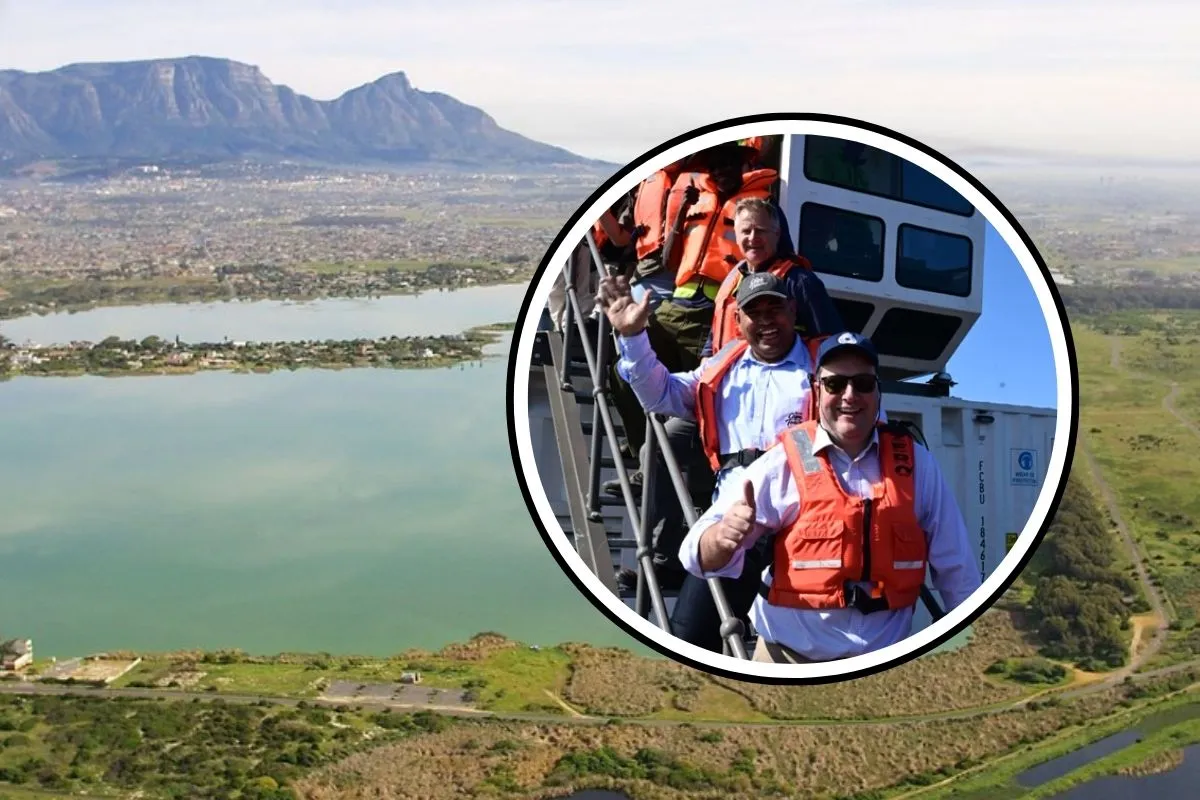
Cape Town’s Zeekoevlei dredging project progresses rapidly
The City of Cape Town reports that dredging at Zeekoevlei is in full swing, with substantial progress achieved.

Cape Town has hit a major milestone in restoring the city’s recreational vleis, as historic large-scale dredging at Zeekoevlei is now fully underway.
This marks the first city vlei dredging in 42 years, representing a key step in rehabilitating one of the Cape Flats’ most important waterbodies.
The project, which began on 30 June, targets the removal of nutrient- and pollutant-rich sediment from the lakebed.
Using innovative floating machinery, dredging teams can reach well beyond the shoreline and work deep into the vlei’s waters.
Dredging at Zeekoevlei makes progress
Mayor Geordin Hill-Lewis, who recently visited the site, said the operation marks a “critical milestone” in the City’s commitment to restoring urban waterways. The team will continue work for 26 months, starting with Storm Bay before moving on to Home Bay.
Preparations for the dredging were extensive: a 4.3 km slurry pipeline was built to transport sediment from Zeekoevlei to dewatering ponds at the Cape Flats Wastewater Treatment Works, where the material is dried and reduced.
A team of 15 specialists—including divers, dredge operators, and deck hands—now operates a floating suction dredger, tested and assembled on site, daily from 06:00 to 19:00.
Progress is already visible, with the team having removed around 15 200 m³ of sediment from Storm Bay so far. They aim to reach a total of 207 000 m³ in this section, which is expected to take about a year to complete.
Deputy Mayor Alderman Eddie Andrews added that the upcoming drier months will accelerate sediment drying and improve working conditions for the teams.
Weed harvesters boost capacity at Zandvlei
While Zeekoevlei’s dredging takes centre stage, the City has strengthened its environmental management at Zandvlei by deploying a second weed harvester, named Spoonbill following a public nomination process. The new vessel doubles the City’s capacity to control aquatic vegetation in Zandvlei’s canals and main waterbody.
Weed harvesters actively remove pondweed and algae, extracting excess nutrients that cause algal blooms and oxygen depletion. In addition to Spoonbill at Zandvlei, another new harvester is now operating at Rietvlei.
Together, these interventions form part of a broader push to rehabilitate Cape Town’s vleis, making them cleaner, safer, and more resilient ecosystems.
